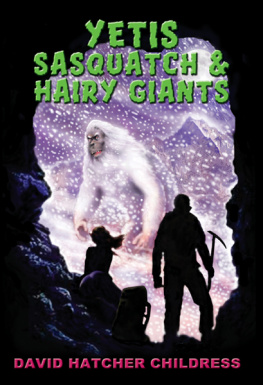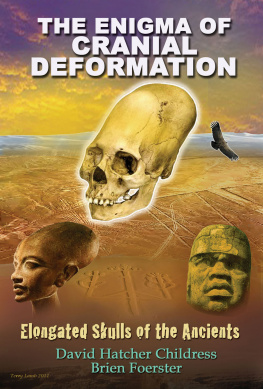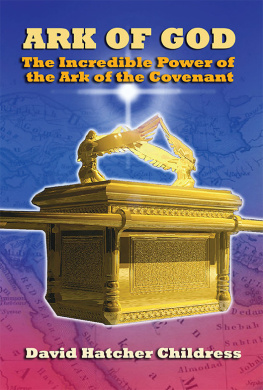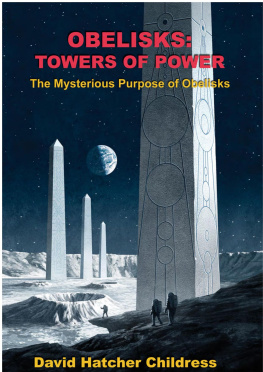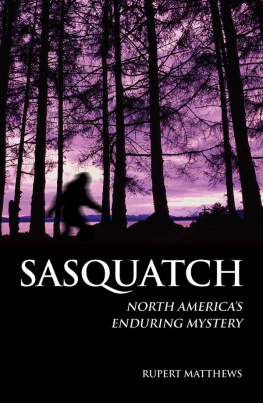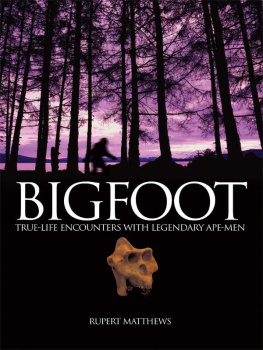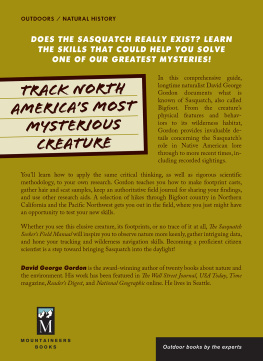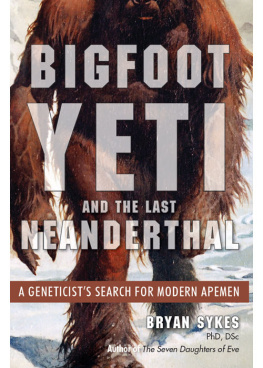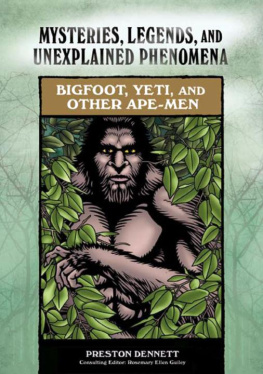YETIS,
SASQUATCH
&
HAIRY GIANTS

Other books by David Hatcher Childress
The Mystery of the Olmecs
Technology of the Gods
Pirates & the Lost Templar Fleet
Lost Continents & the Hollow Earth
Lost Cities & Ancient Mysteries of the Southwest
Lost Cities of China, Central Asia & India
Lost Ciies & Ancient Mysteries of Africa & Arablia
Lost Ciies & Ancient Mysteries of South America
Lost Ciies of Ancient Lemuria & the Pacific
Lost Ciies of North and Central America
Lost Cities of Atlantis, Ancient Europe & the Mediterranean
Atlantis & the Power System of the Gods
Vimana Aircraft of Ancient India & Atlantis
The Crystal Skulls (with Stephen Mehler)
YETIS,
SASQUATCH
&
HAIRY GIANTS
by
David Hatcher Childress

Yetis, Sasquatch & Hairy Giants
ISBN 978-1-931882-98-9
Copyright 2010
by David Hatcher Childress
Published by Adventures Unlimited Press
One Adventure Place
Kempton, Illinois 60946 USA
www.adventuresunlimitedpress.com
www.wexclub.com
www.treknepal.com
TABLE OF CONTENTS
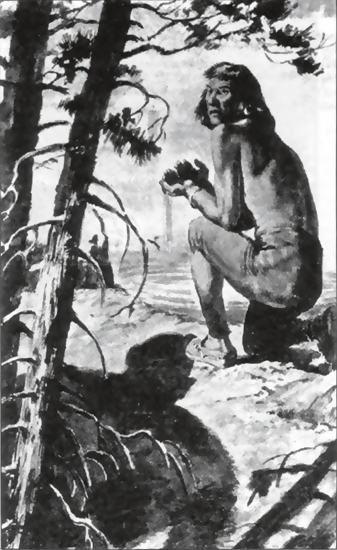
PART ONE:
HAIRY GIANTS

CHAPTER 1
THE GIANTS
OF YORE
There were giants in the earth in those days;
and also after that when the sons of God came
in unto the daughters of men, and they bare
children unto them, the same became mighty men
which were of old, men of renown.
Genesis 6:4

The subject of yetis, bigfoot, hairy giants and wildmen is one that has managed to become extremely popular in modern culture. Tales of bigfoot, yetis, and living giants and wildmen are weekly fodder in the worlds media. Press conferences are called, photos are shown, claims are made and bloggers weigh in with their ponderous opinions.
We will start this book with the subject of giants and wildmen because these subjects are a good precursor to the more controversial subjects of yeti and sasquatch. Giants and wildmen are very real, and no one really doubts that either exist. They both most certainly do. The question, though, is just how big these giants get? There can be no doubt that a good dose of exaggeration has come with stories of giants. Many, if not most, professional giants that worked in circuses and sideshows exaggerated their height as much as possible. Yet, no matter exactly how tall they wereor werentthey were certainly people of considerable height, literal giants.
Since we know that modern giants often exaggerated their height, each struggling through his agent to be the tallest man in the world, it would seem that ancient chroniclers of giants were also told exaggerated stories, or made the exaggerations themselves. Still, we have to wonder at the core truth behind these tales. Were some of the men described really nine or ten feet tall? Did some of them genuinely have six fingers and six toes? What might be the limit for a full grown, proportional man to grow12 or 14 feet tall? It is an amazing thought!
The word giant comes down to us from both ancient Greek and Latin. In Greek mythology, powerful giants called Titanswho were gods ruled the earth during the legendary Golden Age. Their role as Elder Gods was overthrown by a race of younger gods, the Olympians. There are twelve Titans in their first literary appearance, in Hesiods Theogony. Later, a thirteenth Titan named Dione, a double of Theia, is mentioned by the Greek historian Pseudo-Apollodorus in Bibliotheke. The six male Titans are known as the Titanes, and the females as the Titanides (Titanesses). The Titans were associated with various primal concepts, from which their names largely derive. The original Titans were ruled by the youngest, Cronos (Saturn), who had overthrown their father, Oranos (Sky), at the urging of their mother, Gaia (Earth).
Several Titans produced offspring who are also known as Titans. These second-generation Titans include the children of Hyperion (Helios, Eos and Selene), the daughters of Coeus (Leto and Asteria), and the sons of Iapetus (Prometheus, Epimetheus, Atlas and Menoetius).
The Titans were of gigantic stature and enormous strength and, according to myth, they carried on wars with the gods and from them sprang the Gigantes, frightening beings with terrible faces and the tails of dragons. Eventually, the hero Hercules, himself said to be seven feet tall, slew the Gigantes and defeated the Titans with the aid of Zeus, who became the all-powerful god of the Greeks.
Hercules also battled the giant Antaios in one of his adventures. A second-century BC Greek geographer named Pausanias tells us that the great walls of Mycenae, Tiryns and Argos were constructed by the giant race of Cyclopes. It is from this reference that archeologists get the term cyclopean masonry which is used to describe unusually gigantic rocks within walls. The aforementioned Greek cities have such walls, but they are also found in Lebanon, Egypt, Peru, Bolivia, Mexico and many other places.
Homer describes the most famous Cyclops, a giant named Polyphemus, in The Odyssey. He dwelt in a cave on the coast of Sicily and lived on human flesh. He sought for victims with his mighty club which Homer describes:
The monsters club within the cave I spyd
A tree of stateliest growth, and yet undryed,
Green from the wood; of height and bulk so vast,
The largest ship might claim it for a mast.
Giants of a previous civilization were said to have built the dolmens, trilithons and giant walls that are strewn throughout Europe, and are especially prevalent in France and the British Isles. The online encyclopedia, Wikipedia mentions that in Basque mythology, giants were said to have raised the dolmens and menhirs. Natural features like the basalt formation in Northern Ireland called the Giants Causeway were similarly attributed to giants.
In Ireland, Wales, Scotland and England there are numerous tales featuring combat with giants. Giants were often noted for their stupidity. Some British and Irish stories relate how giants threw stones at each othersomething that would explain many great menhirs and other mysterious gigantic stones on the landscape.
In Norse mythology, the giants are typically opposed to the gods and come in different types, such as mountain giants, fire giants, and frost giants. These giants are the origin of many of the monsters in Norse mythology, and it is foretold that in the eventual battle of Ragnark the giants will storm Asgard and defeat the Gods.
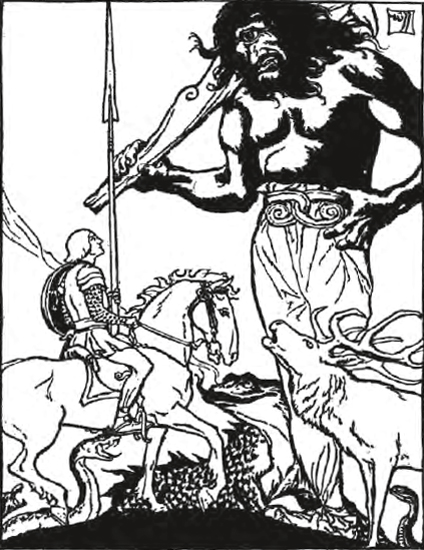
An old print of a knight meeting a cyclops giant.

Six-Fingered Giants of Renown
The Bible makes a number of references to races of people who are of great stature and actually names a number of individuals who were of abnormal height.
Next page
